Sams Choice ham glaze offers a sweet and savory flavor profile, perfect for enhancing your ham. The glaze combines brown sugar, mustard, and fruit juice for a delicious finish.
1.1 Overview of Sam’s Choice Ham Products
Sams Choice offers a variety of ham products, including fully cooked options like spiral-cut and bone-in hams. These products are designed to meet different needs, with sizes ranging from 5-7 pounds to larger cuts for big gatherings. The hams are honey-cured for rich flavor and convenience, making them ideal for special occasions or everyday meals.
1.2 Importance of Glazing for Ham
Glazing enhances the ham’s flavor and texture, adding a sweet and sticky exterior. It helps retain moisture, preventing the ham from drying out during cooking. The glaze also adds visual appeal, creating a caramelized crust that elevates the dish for a more professional presentation and delicious taste experience.
Essential Ingredients for the Glaze
The glaze requires brown sugar, mustard, and fruit juice. These ingredients create a balanced flavor, with sugar for sweetness, mustard for tang, and juice for moisture.
2.1 Brown Sugar as the Base
Brown sugar forms the foundation of the glaze, providing a rich, caramel-like sweetness. Its deep flavor enhances the ham’s natural taste and creates a sticky, golden-brown crust during baking.
2.2 Mustard for Depth of Flavor
Dijon or spicy brown mustard adds a tangy, savory element to the glaze, balancing the sweetness of the brown sugar. This ingredient enhances the overall flavor profile, creating a harmonious blend that complements the ham perfectly.
2.3 Fruit Juice for Moisture and Sweetness
Fruit juice, such as pineapple or orange, adds natural sweetness and moisture to the glaze. It enhances the ham’s flavor and ensures a tender texture. Adjusting the amount of juice allows for the desired glaze consistency, making it versatile for different ham sizes and preferences;
Tools and Equipment Needed
A roasting pan, rack, basting brush, and meat thermometer are essential. These tools ensure even cooking, proper glaze application, and accurate temperature monitoring for a perfectly glazed ham.
3.1 Roasting Pan and Rack
A roasting pan is essential for cooking the ham, ensuring even cooking and preventing it from sticking. Place the ham fat-side up in the pan, using a rack to elevate it for proper air circulation. This setup allows the glaze to caramelize evenly and keeps the ham moist. The pan also collects juices for basting, enhancing the overall flavor.
3.2 Basting Brush
A basting brush is a crucial tool for applying the glaze evenly over the ham. Use a high-quality brush with sturdy bristles to hold enough glaze. During cooking, brush the glaze over the ham every 20-30 minutes to ensure a caramelized, sticky surface. This step is vital for infusing the ham with rich flavors and achieving a perfectly glazed finish.
3.4 Meat Thermometer
A meat thermometer is essential for ensuring the ham is cooked to a safe internal temperature of 140°F. Insert the thermometer into the thickest part of the ham, avoiding the bone, to get an accurate reading. This ensures even cooking and prevents overcooking, helping you achieve a juicy and perfectly glazed ham every time.
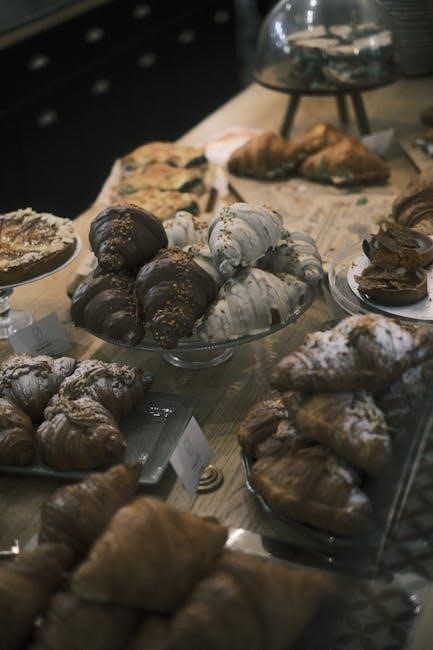
Preparing the Ham
Preparing the ham involves thawing and scoring. Thawing ensures even cooking, while scoring helps the glaze penetrate deeply, enhancing flavor and texture.
4.1 Thawing Instructions
Thawing the ham is crucial for even cooking. Place the ham in the refrigerator 2-3 days before cooking. For faster thawing, submerge in cold water, changing water every 30 minutes. Never thaw at room temperature to ensure food safety and prevent bacterial growth. Proper thawing ensures the ham cooks evenly and stays juicy.
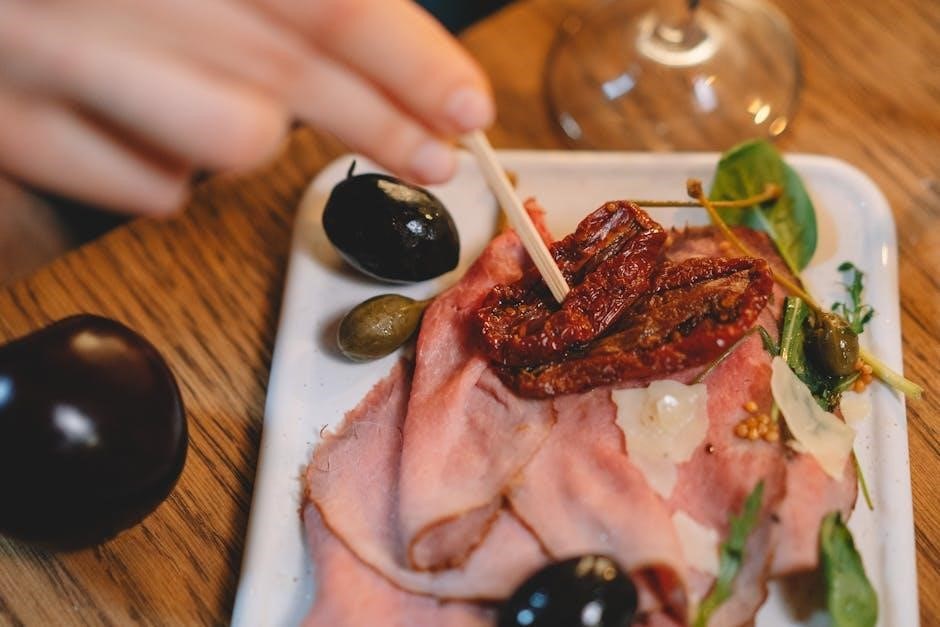
4.2 Scoring the Ham
Scoring the ham is a crucial step for optimal glaze absorption. Use a sharp knife to make light, 1/4-inch-deep crisscross cuts across the ham’s surface. This pattern ensures the glaze penetrates evenly, enhancing flavor and texture. For bone-in hams, score around the bone but avoid cutting too deeply to maintain integrity. This step maximizes the glaze’s adherence and caramelization during cooking.
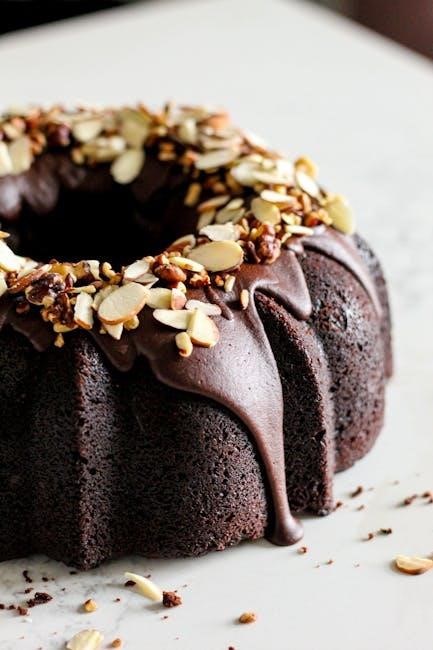
Applying the Glaze
Apply the glaze evenly using a basting brush, ensuring it coats all surfaces. For best results, refrigerate the ham for 30 minutes to allow the glaze to set.
5.1 Brushing the Glaze Evenly
Use a basting brush to evenly coat the ham with the glaze, ensuring all surfaces are covered. Pay special attention to the scored areas, allowing the glaze to seep into the cuts for enhanced flavor. Brush in smooth, consistent strokes to avoid missing any spots. For a thicker coat, apply a second layer after the first has set slightly.
5.2 Allowing the Glaze to Set
After brushing the glaze, let it set by refrigerating the ham for 30 minutes to an hour. This step ensures the glaze adheres properly and flavors penetrate deeply. During cooking, the glaze will further set when exposed to heat, creating a caramelized crust. Allowing the glaze to set enhances both flavor and texture for a perfect finish.
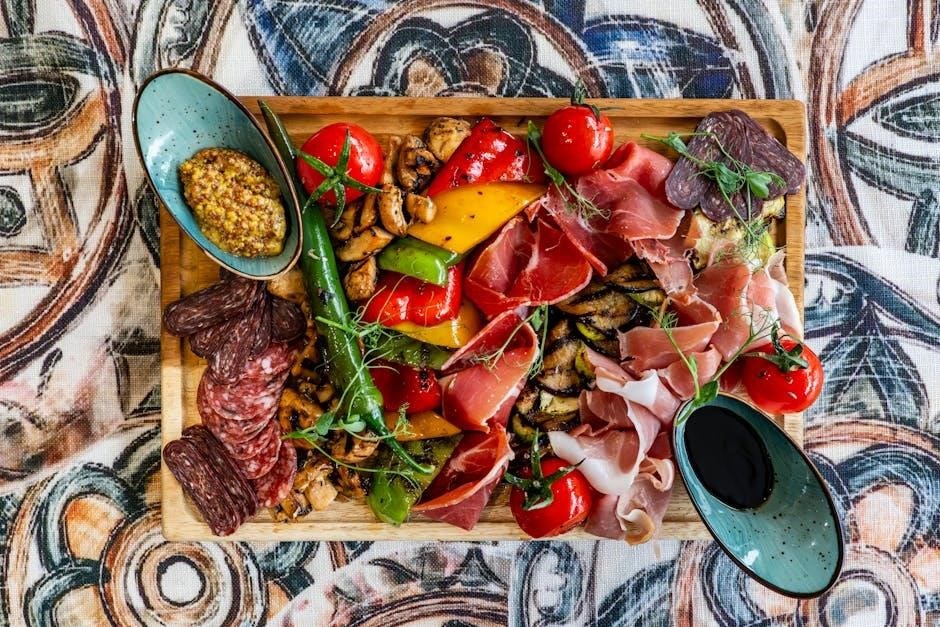
Baking the Ham
Preheat oven to 350°F. Place ham in a roasting pan, cover with foil, and bake until internal temperature reaches 140°F. Baste occasionally for moisture.
6.1 Preheating the Oven
Preheat your oven to 350°F (175°C) to ensure even cooking. This temperature prevents the ham from drying out while allowing the glaze to set perfectly. Proper preheating is essential for achieving a juicy and caramelized finish. Always preheat before placing the ham in the oven for the best results.
6.2 Baking Time and Temperature
Bake the ham at 325°F (165°C) for 10-15 minutes per pound. Cover with foil to prevent drying and baste with juices every 20-30 minutes. Use a meat thermometer to ensure the internal temperature reaches 140°F for safety. This method ensures a juicy, perfectly glazed ham with a caramelized finish.
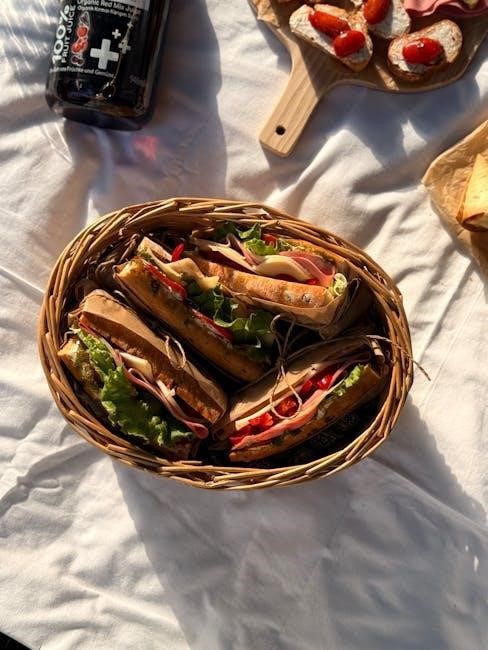
Optional Enhancements
Add pineapple rings or cherries for a fruity twist, or sprinkle cloves for a spicy aroma. These enhancements add visual appeal and extra flavor to your glazed ham.
7.1 Adding Pineapple Rings or Cherries
Pineapple rings or cherries can be placed on top of the ham during the last 20 minutes of baking. They add a sweet and fruity contrast to the savory ham. Secure them with toothpicks if needed, ensuring they adhere to the glaze. This creates a visually appealing and flavorful dish perfect for special occasions.
7.2 Sprinkling with Cloves
Sprinkling whole cloves over the ham adds a warm, aromatic spice flavor. This traditional method enhances the glaze’s sweetness and creates a fragrant, savory aroma. Cloves can be placed strategically on the surface or pressed gently into the scored lines. This optional step adds depth to the dish without overpowering its natural flavors, offering a classic presentation.
Serving Suggestions
Serve the glazed ham alongside classic side dishes like mashed potatoes, green beans, or roasted vegetables. Offer warm rolls or biscuits for a complete, satisfying meal.
8.1 Pairing with Side Dishes
The sweet and savory flavors of the glazed ham complement a variety of sides. Classic options include roasted vegetables, creamy mashed potatoes, and steamed green beans. For a festive touch, add pineapple rings or cherry garnishes to the ham, which also pair beautifully with warm biscuits or dinner rolls. These combinations ensure a well-rounded and delicious meal.
8.2 Leftover Ideas
Transform leftover glazed ham into hearty meals. Slice thinly and add to omelets, pasta, or salads. Use in sandwiches with mustard or mayo for a tasty lunch. Dice and mix into soups, casseroles, or fried rice. You can also freeze portions for future meals, ensuring no delicious ham goes to waste and offering versatility for days to come.
Tips for Different Ham Sizes
Adjust glaze quantity and cooking time based on ham size for optimal results. Smaller hams need less glaze and shorter cooking times, while larger hams require more.
9.1 Adjusting Glaze Quantity
For smaller hams (5-7 pounds), use 2-3 cups of glaze. Larger hams require more, while smaller ones need less. Adjust the glaze consistency by adding more or less fruit juice. Thinner glazes coat evenly, while thicker ones provide a richer flavor. Use a basting brush to apply the glaze uniformly for the best results.
9.2 Cooking Time Variations
Cooking time varies based on ham size. A 5-7 pound ham takes 2-3 hours at 325°F, while larger hams may require up to 4 hours. For spiral-cut hams, reduce time by 30 minutes. Use a meat thermometer to ensure the internal temperature reaches 140°F. Always baste with glaze during the last 20 minutes for a caramelized finish.
The Sams Choice ham glaze creates a perfect balance of sweet and savory flavors. Follow the instructions carefully to achieve a delicious, caramelized finish for your ham.
10.1 Summary of Key Steps
Thaw the ham, score the surface, and prepare the glaze using brown sugar, mustard, and fruit juice. Apply the glaze evenly, bake at 325°F, and check the internal temperature reaches 140°F. Ensure the ham is cooked through and the glaze is caramelized for a perfect finish.
10.2 Final Tips for a Perfect Glazed Ham
Ensure the ham is thawed properly and scored lightly for glaze adhesion. Let the glaze set before baking for a caramelized finish. Use a meat thermometer to avoid overcooking. Baste with pan juices for moisture and flavor. Tent with foil to prevent burning. Let the ham rest before slicing for juicy results.
